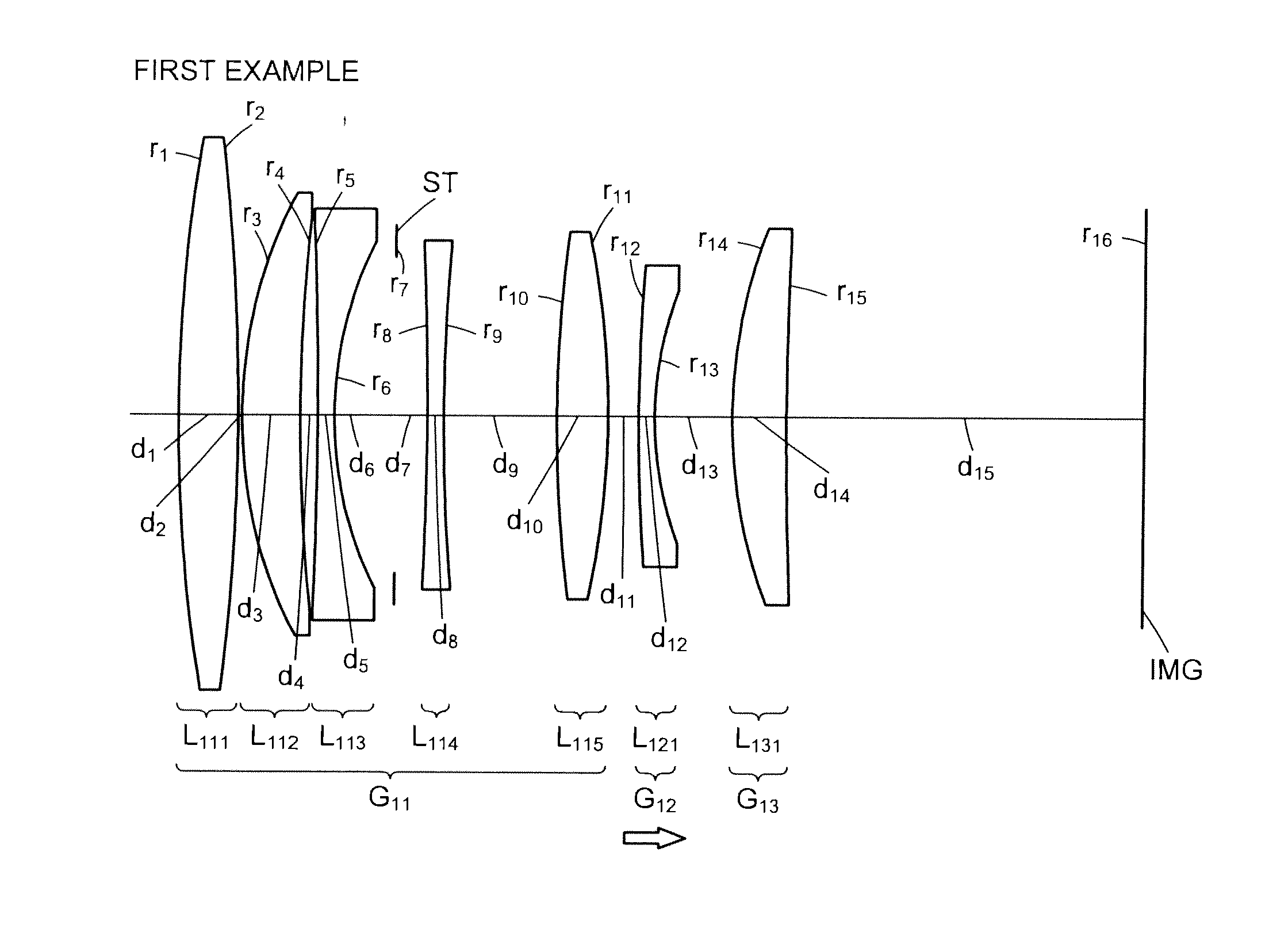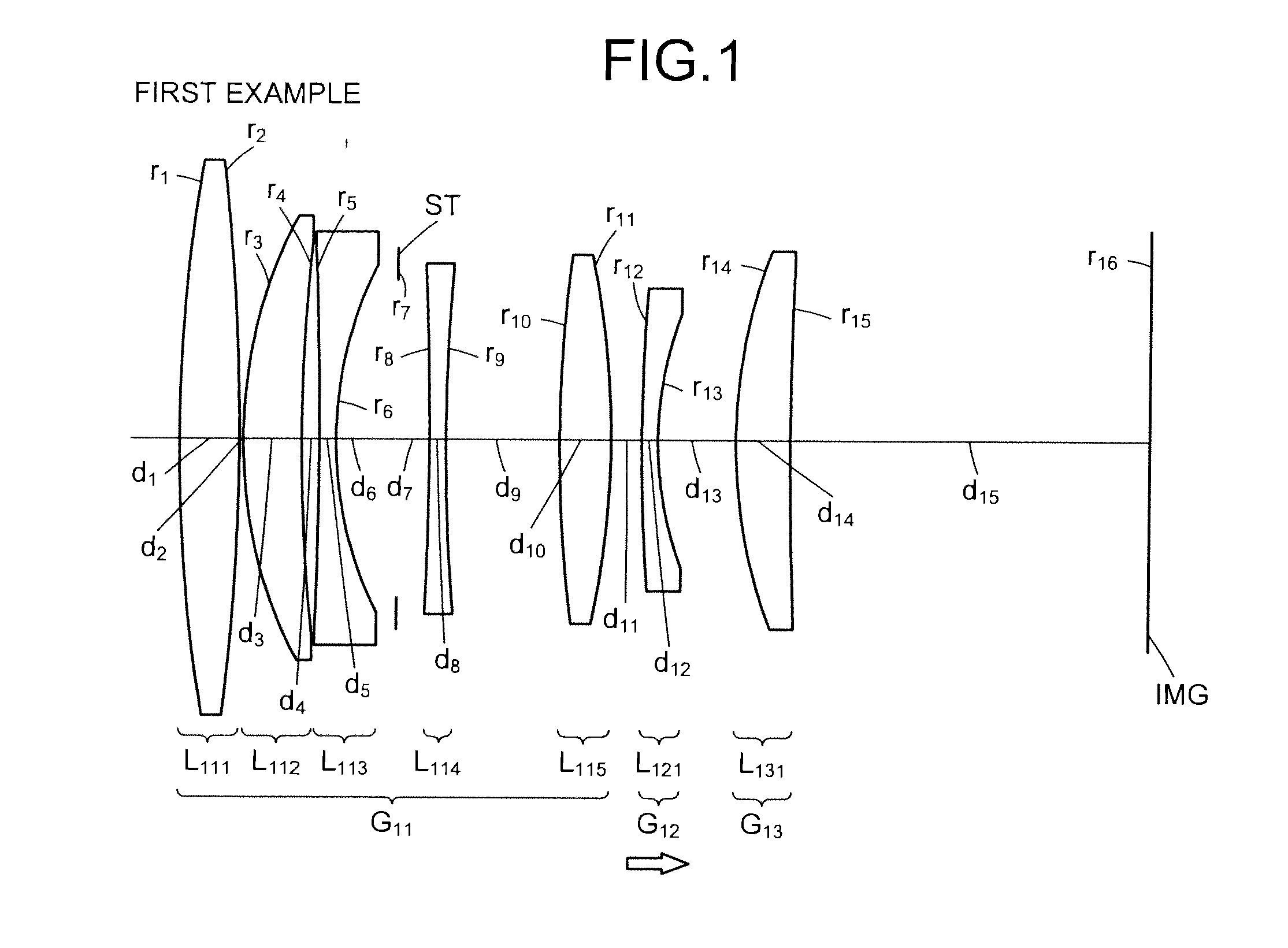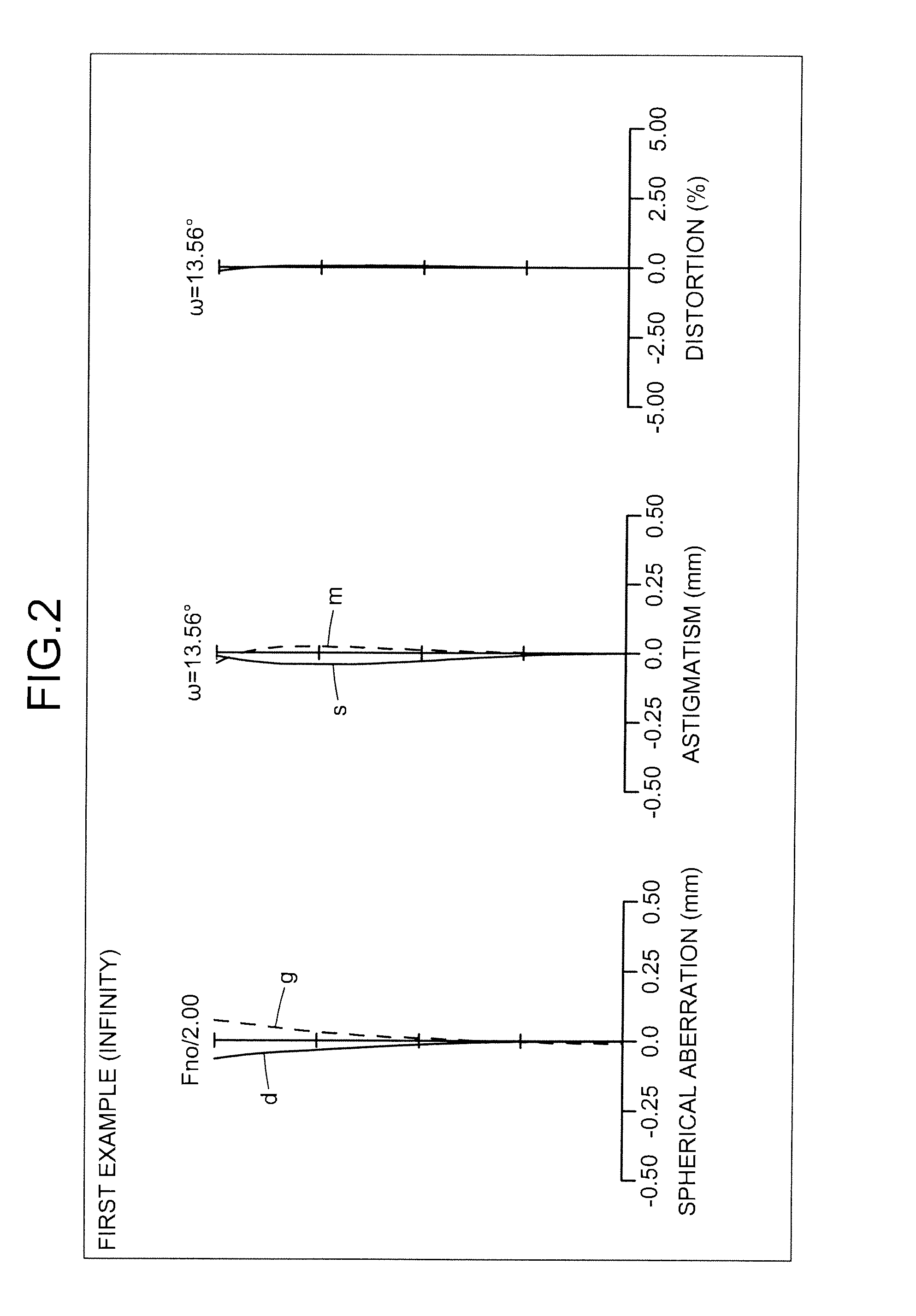Fixed focus lens
a fixed focus and lens technology, applied in the field of fixed focus lenses, can solve the problems of limiting the degree of freedom in design, not facilitating simplification, and not sufficiently achieving the effect of reducing siz
- Summary
- Abstract
- Description
- Claims
- Application Information
AI Technical Summary
Benefits of technology
Problems solved by technology
Method used
Image
Examples
Embodiment Construction
[0028]Referring to the accompanying drawings, exemplary embodiments according to the present invention are explained in detail below.
[0029]A fixed focus lens according to the present invention includes sequentially from the object side, a first lens group having a positive refractive power, a second lens group having a negative refractive power, and a third lens group having a positive refractive power.
[0030]To reduce the overall length of the optical system, the combined magnification of the second and the third lens groups, which are subsequent the first lens group, is preferably increased and the focal length of the first lens group is shortened. However, if the magnification of the second lens group and the third lens group is unnecessarily large, aberration occurring at the first lens group is intensified at subsequent groups. To prevent this negative effect, the first lens group has to minimize the aberration that occurs therein. To favorably correct aberration by the first le...
PUM
 Login to View More
Login to View More Abstract
Description
Claims
Application Information
 Login to View More
Login to View More - R&D
- Intellectual Property
- Life Sciences
- Materials
- Tech Scout
- Unparalleled Data Quality
- Higher Quality Content
- 60% Fewer Hallucinations
Browse by: Latest US Patents, China's latest patents, Technical Efficacy Thesaurus, Application Domain, Technology Topic, Popular Technical Reports.
© 2025 PatSnap. All rights reserved.Legal|Privacy policy|Modern Slavery Act Transparency Statement|Sitemap|About US| Contact US: help@patsnap.com



